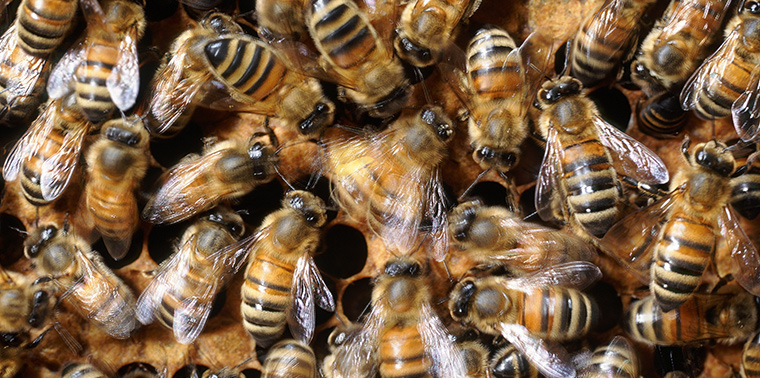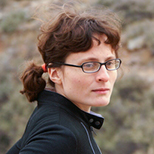September 8, 2014 — The question scientists at the University of Sussex in the U.K. had was simple: Where do honeybees find food? But finding a way to answer that simple question seemed not so simple. Tiny radio or GPS trackers have a limited range, and it would take huge amount of work to survey fields on foot. Instead, researchers Margaret Couvillon, Roger Schürch and Francis Ratnieks tried a more direct route: They “listened” to the directions to food sources that bees shared with their hive-mates. What they found could improve how we design conservation programs to help ailing bee populations.
The researchers wanted to know where bees feed so they could assess how well various farmland set-aside programs work in keeping pollinator populations healthy. That’s important because without the work of pollinators, yields for many fruit, seed and nut crops could decrease 90 percent. While many crops rely on bees, bees need other plants to thrive, and one of the main factors in the worldwide decline of honeybee populations is the loss of diverse flowering landscapes to agricultural uses. “Whether or not they’re challenged by pesticides or pathogens or pests, they will be particularly challenged if they still can’t even collect their food,” says Couvillon.
By decoding some 5,500 waggle dances over two years, Couvillon and colleagues were able to plot bee buffet hot spots on a map.
In order to preserve wildlife, European countries provide incentives for farmers to diversify their lands in the form of agri-environment schemes. Farmers sign up for different levels of the AES, which can include anything from switching to organic farming methods to setting aside grasslands for stewardship. Though billions have been invested in these programs in Europe, data is sparse on which approaches are best for pollinators. To determine what types of land honeybees prefer, Couvillon and colleagues let the bees put in their votes.
Waggle Watching
Honeybees share directions to food sources by shaking their abdomens while moving in figure eights. The amount of time the dance takes lets other bees know the distance. Each second of dancing is equivalent to about 750 meters of distance to the food source. The angle of the dance indicates direction, based on the sun on the horizon. For instance, if a bee dances for 5 seconds with its head pointed directly to the bottom of the hive, it’s telling other bees to fly 180 degrees from the sun for about 3.75 kilometers.
By decoding some 5,500 waggle dances over two years, Couvillon and colleagues were able to plot bee buffet hot spots on a map that showed different AES land types within about 100 square kilometers of a particular hive. Not surprisingly, the most popular destinations for the bees were two wild-flower rich nature reserves.
What was surprising, though, says Couvillon, is that bees preferred rural land managed under “higher level” AES, the most demanding conservation land scheme, over lands under the different categories of “organic entry” stewardship, more of mid-level option for farmers with organic certification or in the process of converting land to organic.
Honeybees are generalists, so what’s good for them is good for other pollinators.Though they don’t know exactly why the bees tended to avoid the organic entry land types, Couvillon says that one reason could be that these farms need to be mowed more often to establish clover mix that adds nitrogen to the ground. Meanwhile, the higher level AES land establishes temporary grasslands that would provide plentiful wildflowers for bees to feed on.
Honeybees are generalists, so what’s good for them is good for other pollinators, says Couvillon. As a result, watching them tell their story through the waggle dance can provide information about how to conserve other bees as well.
There are still many questions the scientists hope to answer with further research. For example, though the bees in this study appeared to not favor urban areas, the researchers haven’t yet evaluated how bees might respond to “greener” cities or to different types of agricultural buffer zones, such as unmowed ditches or hedgerows. They also hope the experimental technique will be used to evaluate lands in the U.S.
What the research has shown is that, to get more bang for our buck in conservation dollars, it pays to listen to the bees.
“They only dance for the best that can be found,” says Couvillon.
![]()
Ensia shares solutions-focused stories free of charge through our online magazine and partner media. That means audiences around the world have ready access to stories that can — and do — help them shape a better future. If you value our work, please show your support today.
Yes, I'll support Ensia!
